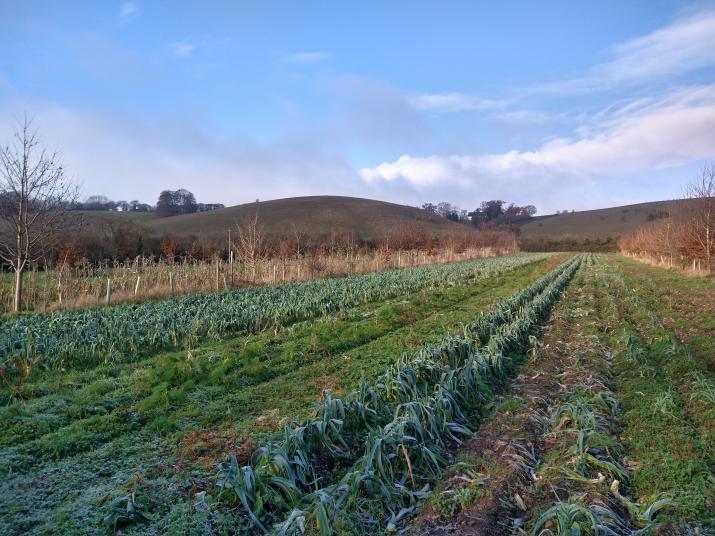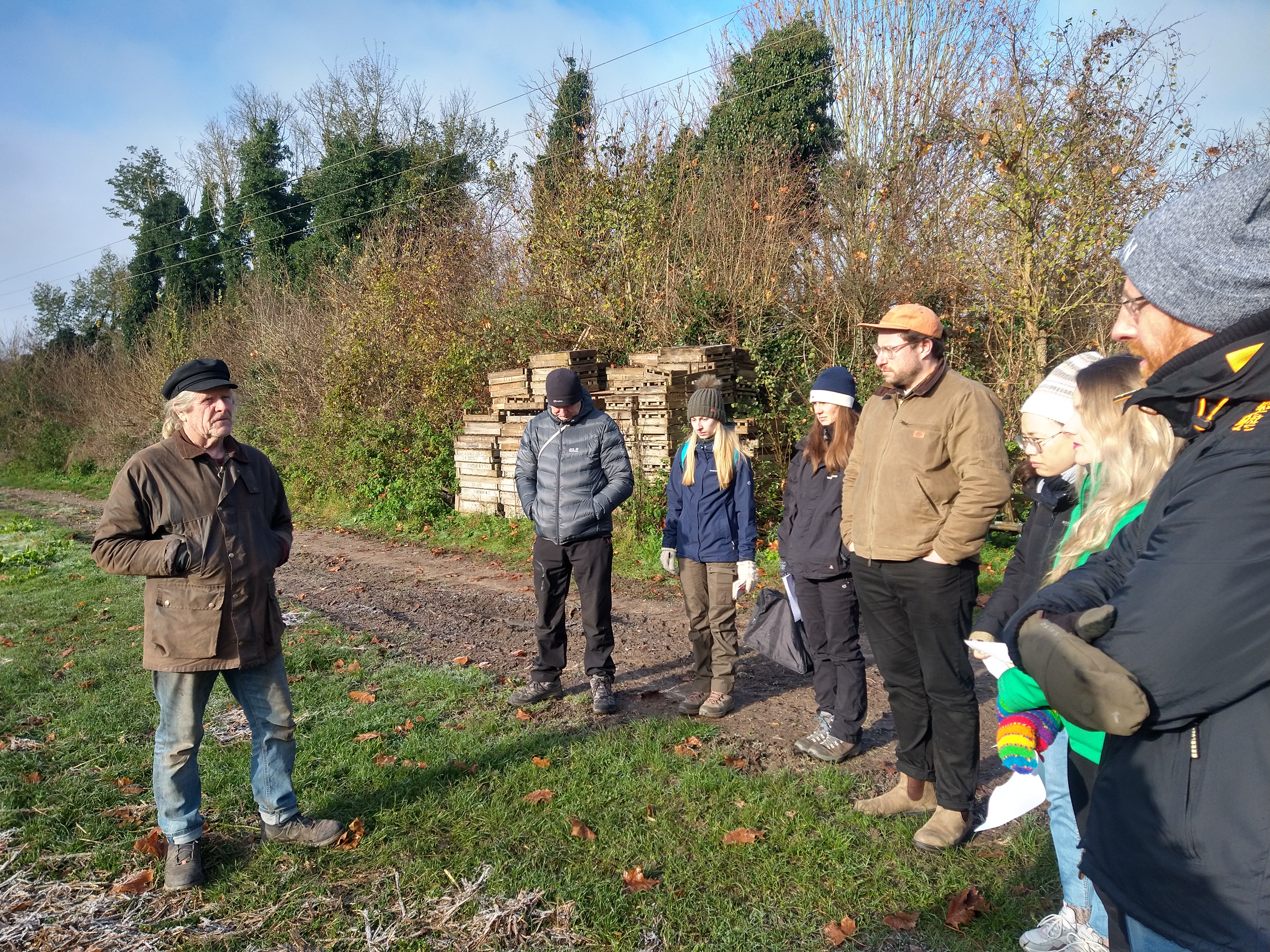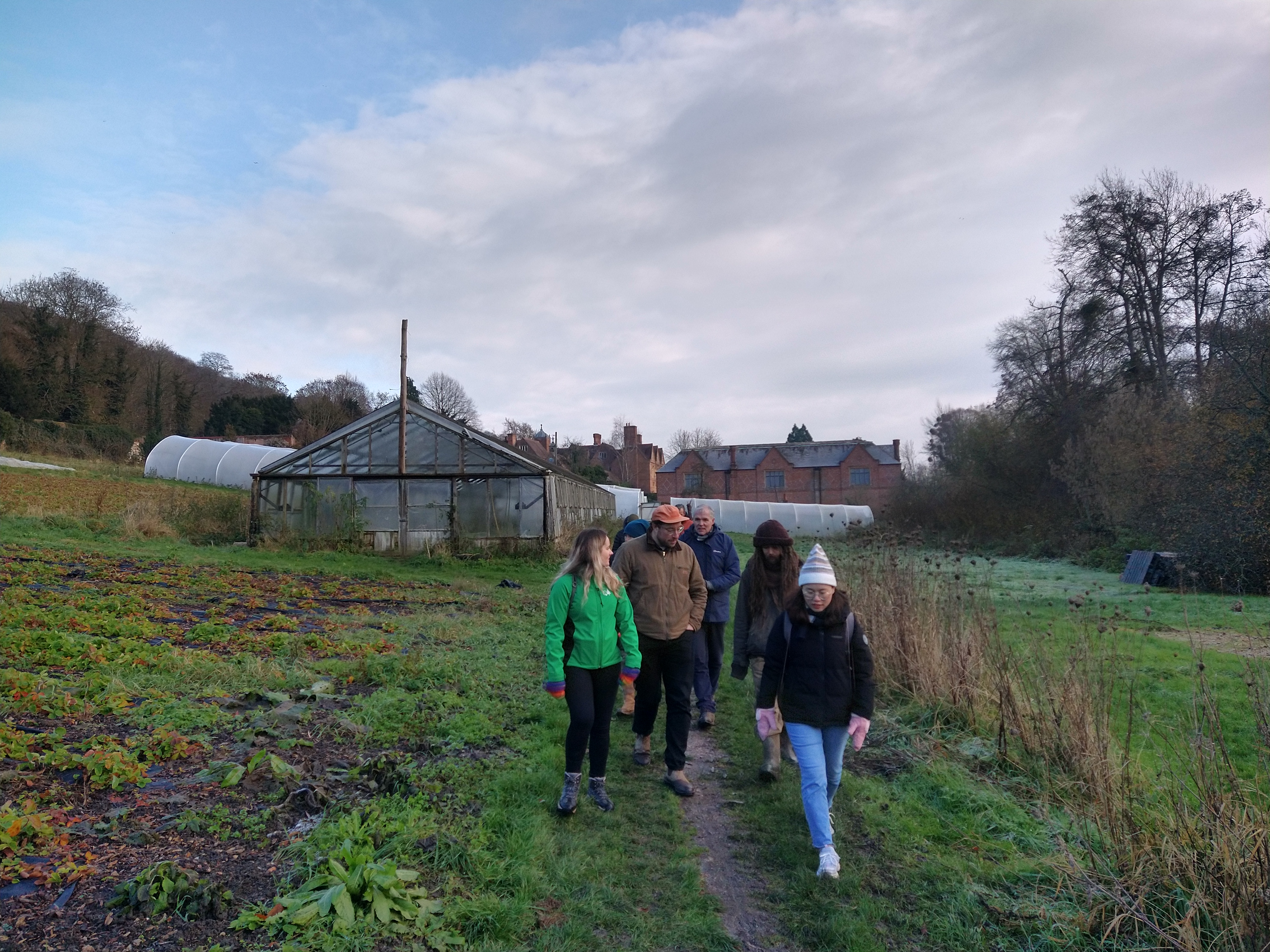
On a freezing cold but beautiful winter’s day near Whitchuch-on-Thames in Oxfordshire, a small group of agroforestry enthusiasts were given a tour Ian Tolhurst’s organic farm. Those of you who have read George Monbiot’s most recent book, ‘Regenesis’, will appreciate the achievement that Tolly has made over 20 years in agroforestry. Good examples of agro-forestry are rare in the UK (two of the best are in Oxfordshire: Tolhurst and Farm Ed in West Oxon.). This meant that we were joined by interested colleagues from, for example, The Woodland Trust, Forestry Commission and the University of Reading Agroforestry group.

‘Tolly’ (as he is known) talked about the origins of the farm (at just under 5ha, it didn’t qualify for a subsidy under the CAP but may do under the Environmental Land Management Scheme, ELMS). However, with the box scheme and on-farm shop, the enterprise is profitable and manages to be so without any artificial inputs. Tolly emphasised the importance of maintaining soil cover (with a green manure) at all times (modern farms ‘squander’ nutrients in his words) and the huge value of woodchip. A thin layer (approx. 15mm), combined with an excellent soil structure with a large earthworm population, means that the wood chip is broken down quickly and becomes available to the growing crops (including leeks, brassicas, carrots/parsnips, potatoes and squashes ).
Tolly was candid about the value of agroforestry – it’s a lot of work and labour intensive with lots of unknowns about how to make it work, making the point that it must be part of a whole-farm plan with careful planning of crop rotation, nutrient recycling etc. Planting in their agroforestry project, funded by the Woodland Trust, went for a range of tree species, including fruit trees, along each row. Tolly suggested however, that with overgrown hedges, low intensity farming and wide field margins the biodiversity on the farm, including a significant population of pest predators, was sufficiently high without the need for mixed species planting. This would be much more efficient in terms of management, for example coppicing for wood chip as the trees mature (a good proportion of the farm’s woodchip currently comes from an earlier plantation of coppiced willow occupying a wet corner of one of the farm’s two fields). There are still lots of lessons to be learned and Tolly repeated several times that agro-forestry is not a magic solution for all the ills of modern agriculture and its ecological impacts.

The second part of the tour, led by the head of the horticultural team Sparrow, took us to the poly-tunnels in the walled garden. A fascinating tour of the different aspects of production and the difficulty, in any one year, of predicting which crop will do well despite best efforts. The poly-tunnels were a bit warmer and we finished the tour with coffee and sandwiches (and a chance to mix and talk) in the potting shed. Thanks go to Caitlin Lewis for organising a really good day and a fascinating glimpse of the future – it seems likely that agroforestry will become much more a part of the UK landscape than it has been thanks to the long years of thought and experimentation by people like Tolly. We are grateful to Tolly and Sparrow for their time and enthusiasm, Chris Foster for driving the bus and to ialeUK for making the day possible.
Geoff Griffiths & Chris Foster